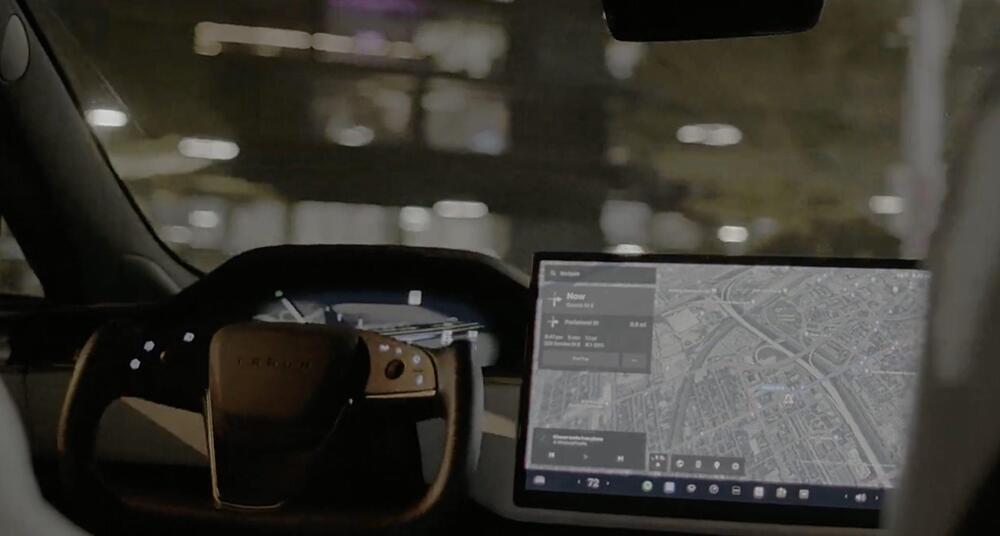Has the search engine behemoth shut down chatter on ‘Where is Google on AI?’
Alphabet shares ended 5.3% higher as Wall Street cheered the launch of Gemini, saying its new AI model could narrow the gap Microsoft-backed OpenAI race.

This robotic catheter can be large and small, rigid and maneuverable.
Researchers at Boston University developed a robotic catheter with shape-shifting abilities for safer, less invasive cardiac surgeries.
Today, I am going to talk about how AI is already making a significant impact in the realm of breast cancer diagnosis, particularly in the critical task of r…
Jensen Huang, the C.E.O. of Nvidia, the world’s leading maker of chips for artificial intelligence, discusses rising competition in the industry and why he e…
Siri, write this down immediately. A movie where robots are performing reverse-Turing tests on humans to see if we’re smart enough to be considered sentient…
📰 Subscribe to UnHerd today at: http://unherd.com/joinUnHerd’s Flo Read meets Nick Bostrom. In the last year, artificial intelligence has progressed from a s…
Head to head comparison of the two top robotic companies that seem to be the most advanced at this time: Figure 1 and Tesla’s Optimus. Robotics expert Dr. Scott Walter does a deep dive comparison. My website: https://www.herbertong.com Get Free TESLA Milestone Tables Check out the MOST comprehensive library of resources for the $TSLA Investor Scott Walter is an Aerospace Engineer with a Ph.D. in Mechanical Engineering and has co-founded two robotics companies.

Tesla CEO Elon Musk has alluded to an upcoming “tap to park” feature for the automaker’s Full Self-Driving (FSD) beta. While it isn’t clear when it’s expected to become available, some have already pointed out how useful such a feature could be.
On Friday, Musk responded to a post on X saying that Tesla is developing a feature in which the car identifies potential parking space options, letting users tap the one they want to use. Upon doing so, the driver will then be able to leave the vehicle before the vehicle parks in the selected space.
The statement came in response to another post claiming that a 360-degree bird’s eye view would be irrelevant in a world of self-driving vehicles, as the driver wouldn’t need to do anything at all for the vehicle to locate and park in a specific spot.

French startup Mistral AI has released its new language model Mixtral 8x7B via a torrent link. Mixtral is a mixture-of-experts model, following an architecture that OpenAI is rumored to be using for GPT-4, but on a much larger scale.
There are no benchmarks, blog posts, or articles about the model yet, but Mistral-7B — the first version of Mistral AI — generally performed very well and was quickly adopted by the open-source community. Mistral is thought to have used the MegaBlocks MoE library for training. The Paris-based company was recently valued at nearly $2 billion.
Rotor Technologies is now in production on a full-size unmanned helicopter for civilian use. Based on the Robinson R44 Raven II, the R550X flies for more than three hours, at speeds up to 150 mph (241 km/h), carrying up to 1,200 lb (550 kg) of cargo.
According to Torklaw, helicopters have about 9.84 crashes per 100,000 hours of flight time. That’s curiously low, given their reputation and the fact that “general aircraft” have 7.28 crashes per 100,000 hours. But still, they’re notoriously tricky to fly, and there are a growing number of projects attempting to make them much easier, using simple fly-by wire joystick controls, or even simpler one-finger tablet control schemes.
Safest of all, of course, is to leave the humans on the ground altogether, and that’s what New Hampshire company Rotor Technologies has been focused on from its modest hangar at Nashua Airport, about 30 miles (50 km) outside Boston. It’s been flying two R22-based autonomous chopper prototypes since December last year, across nine locations in New Hampshire, Idaho and Oregon. It wrapped up its test campaign in November, having logged “more than 20 hours” of flight time.